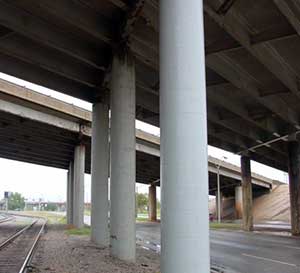The Current Condition of Our Nation’s Bridges: A Call for Immediate Action A recent study by Transportation for America paints a grim picture of the state of America's bridges. More than 18,000 bridges located in major urban areas are classified as structurally deficient. In cities like Los Angeles, an average of 396 vehicles traverse a deficient bridge every single second. This statistic underscores just how severe the problem really is. To put it into context, there are actually more deficient bridges in these urban areas alone than there are McDonald's locations across the entire U.S., according to James Corless, the director of Transportation for America. Furthermore, 75% of all traffic in busy metropolitan regions passes over one of these deficient bridges each day. According to Transportation for America, a bridge is considered deficient if it exceeds its recommended lifespan of 42 years. Many of the bridges we rely on most heavily today were built decades ago and are now well past their prime. The recent report, titled "The Fix We're In For: The State of Our Nation's Bridges," was released shortly after the sudden closure of a crucial commuter bridge in Louisville, Kentucky. Inspectors discovered two critical cracks in the load-bearing portion of the bridge, forcing it to shut down abruptly. This unexpected closure left 80,000 daily commuters scrambling to find alternative routes. This troubling report serves as a stark reminder of the tragic incident that occurred on August 1, 2007, when the I-35 bridge in Minneapolis collapsed, causing injuries and fatalities. That bridge had been constructed back in 1967, and the city's population had grown by 42% between 1990 and 2003. For years, both taxpayers and government officials have largely ignored the urgent need for proper maintenance and modernization of our aging infrastructure. However, history shows that investing in transportation and infrastructure spurs economic growth. Such investments generate jobs, enhance connectivity for people and goods, ease traffic congestion, lower fuel expenses, and—most importantly—save lives by ensuring that vital structures receive necessary repairs before they fail. One of the primary obstacles lies in the distribution of federal funds. Surprisingly, states have the legal authority to divert up to half of their allocated federal funds meant for bridge repairs to other projects without facing any scrutiny. Transportation for America suggests increasing funding for state bridge repair initiatives while enforcing strict rules that ensure these funds are used solely for maintaining our bridges. In order to maximize taxpayer contributions, focusing on repairs rather than replacements should be prioritized. Methods that provide lasting solutions include employing carbon fiber reinforcement systems, such as those provided by HJ3 Composite Technologies. Carbon fiber has proven effective in restoring bridges and could significantly extend the lifespan of numerous bridges nearing or surpassing their expected lifespans. Completely rebuilding these structures would not only be costly but also unnecessary; with appropriate care, their service life can be extended by 50 to 100 years. HJ3, a respected leader in the composites field, boasts an excellent reputation, superior products, top-notch engineering services, and unmatched on-site quality assurance. Letting roads and bridges fall into disrepair will end up costing state and local governments billions more compared to regular, timely maintenance and upkeep of these essential assets. Should you wish to learn how HJ3's carbon fiber solutions can benefit your state, feel free to reach out to HJ3 at [contact information] or call 1-877-303-0453. Round Mechanical Tubing,Seamless Mechanical Tubing,Mechanical Steel Tubing Hydrogrand Steel Pipe Co.,ltd , https://www.hydrograndtube.comThe Bridge Reinforcement Solution We Need

These Support Columns Were Strengthened Using HJ3's Advanced FRP System
â€